iPhone 13 Pro Max review: is biggest the best?
Apple's iPhone 13 Pro Max is better than ever, thanks to an incredible screen and battery life, but is bigger better?



As the flagship model, the iPhone 13 Pro Max is the very best iPhone available. If screen size and battery life really count, then this is the model for you, though for everything else, the iPhone 13 Pro is just as good in a smaller package.
-
+
120Hz Pro Motion screen
-
+
Outstanding for photo and video
-
+
Huge battery life
-
+
Huge storage options
-
-
Very large device
-
-
Doesn't provide extra features from the Pro
-
-
Notch (iPhone 14 ditches for 'Dynamic Island')
Why you can trust T3
T3's iPhone 13 Pro Max review in a nutshell: with a higher-res screen and the longest battery life of any iPhone, it’s arguably the best phone of Apple’s iPhone 13 line-up. However, the only difference from the smaller iPhone 13 Pro is screen size and battery, so it’s only worth paying the extra for the Max if you really prioritise those things.
Otherwise, it has all of the new additions that the iPhone 13 Pro boasts, from the upgraded triple-lens camera system to the 120Hz ProMotion screen, to the most powerful phone processor ever.
And that’s building on what was already so great about the iPhone 12 Pro Max – including the gorgeous stainless frame, Apple ProRaw photo support, and the incredible Dolby Vision HDR screen.
The iPhone 13 Pro Max is a great beast of a phone, as is its follow-up, the iPhone 14 Pro Max. The latter ditches the notch for a cool 'Dynamic Island' feature and improves the camera too, making it a tempting prospect with an even brighter screen. Both models are the same price, however, so if you're after the biggest iPhone on the market, here's why the iPhone 13 Pro Max is still a great option...
iPhone 13 Pro Max review: Price and release date
The iPhone 13 Pro Max was released on 24 September 2021. The price for the cheapest version (relatively speaking) is £1,049/$1,099/AU$1,849, which comes with 128GB of storage.
You can upgrade to 256GB of storage for £1,149/$1,199/AU$2,019, 512GB for £1,349/$1,399/AU$2,369 or – for the first time – a colossal 1TB of storage for £1,549/$1,599/AU$2,719.
No surprise, this is the most expensive model in Apple’s iPhone range, especially in the larger sizes, but if you’re planning to take a lot of high-quality photos and video with it, maybe it’s exactly what you’ve been waiting for. The iPhone 14 Pro Max, however, is another £150 more in the UK (its RRP remains the same in the USA).
Get all the latest news, reviews, deals and buying guides on gorgeous tech, home and active products from the T3 experts
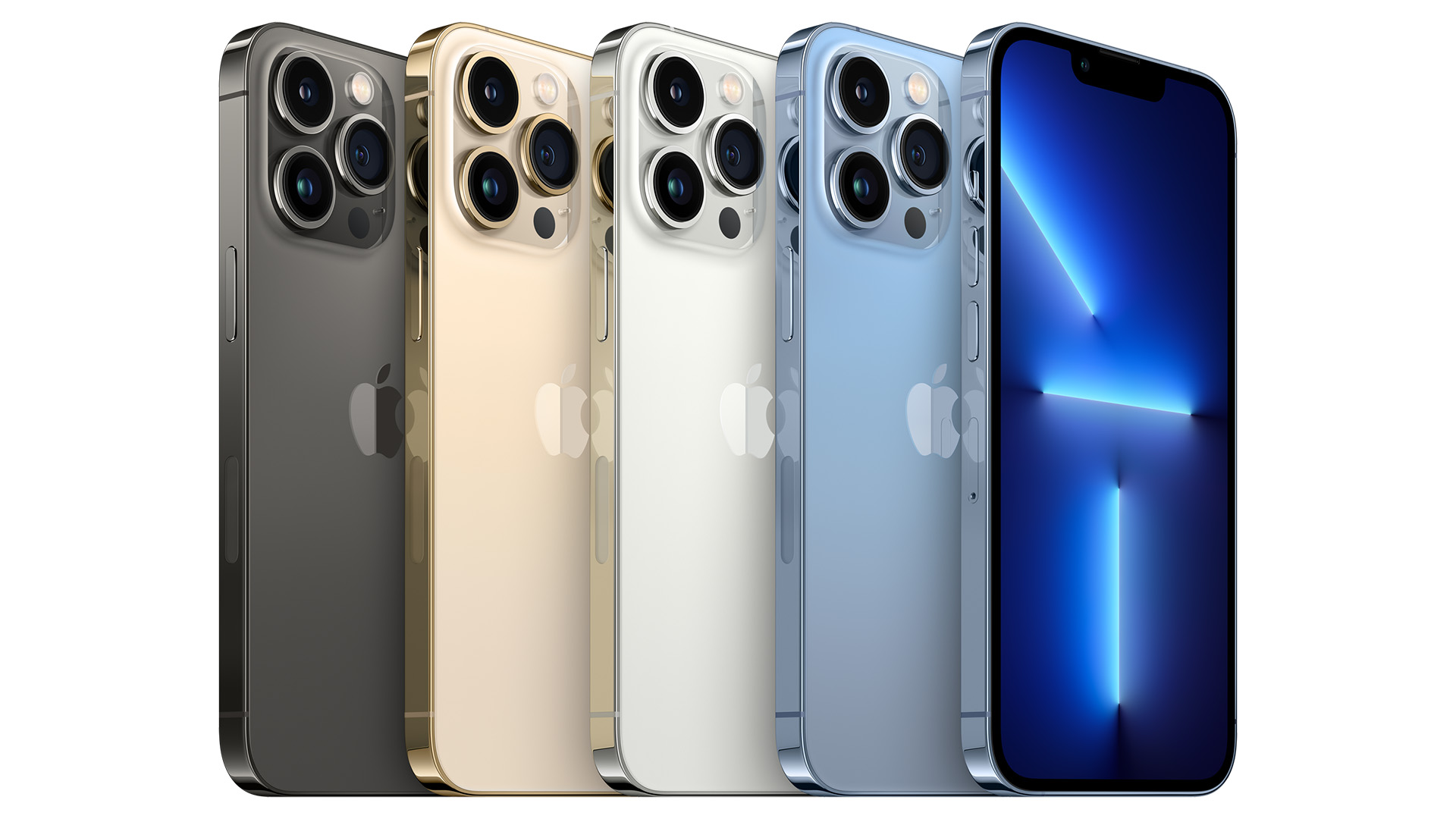
iPhone 13 Pro Max review: features and what's new
The new features for the iPhone 13 Pro Max, like all good things, come in threes. There's a huge update to the rear camera array, a spectacular new screen with ProMotion that brings 120Hz refresh to the iPhone for the first time, and a bigger battery for longer usage.
The camera upgrade is significant, even if on the surface it looks like the same triple camera set up as before. All three cameras are brand new. There's a larger sensor and wider aperture on the main camera, the ultra-wide now offers macro focusing down to 2cm (plus a wider aperture) and the telephoto lens is longer, with an equivalent of 77mm. All three also allow for night mode shooting.
The Super Retina XDR display is brighter than before and features Apple's ProMotion technology. This allows for a variable refresh rate from as little as 10Hz all the way up to 120Hz, depending on the current need.
Battery life has benefited from the variable refresh rate and the new A15 Bionic processor, but also thanks to a larger capacity battery. This now offers a 2.5-hour improvement on the iPhone 12 Pro Max, giving users up to 28 hours of video playback.

iPhone 13 Pro Max review: design
There's no big design change for the iPhone 13 range, so the 13 Pro Max looks very similar to the previous model. There are giveaways though. On the front, the camera notch is not as wide – a reduction of 20%. It is still the same height though, so it doesn't actually give you more screen space. It just means a little more room for battery, Wi-Fi, data and network icons.
That screen is still protected by the ceramic shield, which is designed to be more durable and protect against drops and knocks. The phone has an IP68 water resistance, which means that it is rated for submersion at depths over one meter for 30 minutes. As on the previous models, the sidebands are surgical grade stainless steel, and have been color-matched to this year's four color options.
In addition to the Graphite, gold and silver versions, there is a new Sierra blue model, replacing last year's Pacific blue. This is a much lighter blue, almost silvery in color. This year's gold also feels a little lighter, giving it a more subtle and classy feel.
On the rear, the camera positioning remains the same but the raised section and lenses are more pronounced. The difference is millimeters, but when the phones are put back to back, you can see the difference. Thankfully the cases for the iPhone 13 Pro Max allow for this and once on, you would never know it was any different.
Of course, if you do opt for one of the leather or silicone Apple cases for the iPhone 13 Pro Max, you won't see much of the body color, aside from the small area underneath the clear camera array. With a phone of this size and expense, I would definitely recommend keeping it in a sturdy case for extra protection.
The sheer size of the iPhone 13 Pro Max has pros and cons. On the one hand, it's rather large to fit in a pocket and the expanse of the screen makes it impossible to operate fully with one hand. On the other hand, the payoff is that incredible screen. Watching any content on it instantly looks better than on a smaller device.

iPhone 13 review: display and speakers
The display on the iPhone 13 Pro Max is 6.7 inches, and that is large. Accordingly, it has a high resolution of 1284x2778, which works out as a razor-sharp 458 pixels per inch.
Like last year’s model, it supports Dolby Vision HDR, and hits peak brightness of 1,200 nits for HDR content, which is excellent – even the majority of high-end TVs don’t deliver that much brightness.
But this year’s 13 Pro models are also brighter when it comes to general use, too. Previously, the Pro models maxed at 800 nits of brightness for regular use, but they can now hit 1,000 nits in bright light, so that what’s on the screen is more visible.
The headline feature on the screen, of course, is support for refresh rates up to 120Hz – all previous iPhones were 60Hz. Refreshing the screen twice as often means anything moving on it looks smoother and clearer – so that can be animations, but also when you’re scrolling through lists or webpages, you can actually see what’s going past, instead of it being a blurry smear.
This tech can hammer battery life, but Apple uses it smartly, thanks to tech it calls ProMotion. Basically, the iPhone dynamically shifts how often it refreshes the screen depending on what’s happening. Scrolling? It’ll ramp up to 120Hz. Watching a video? It’ll drop to 60Hz or 30Hz to match the video. If you’re just reading still pages of an ebook, it can drop to 10Hz to save battery.
I'd never felt that the iPhone's screen needed a greater refresh rate, until I tried the iPhone 13 Pro Max. Now going back to the 12 Pro Max feels really juddery in comparison. Basic browsing through photos and websites instantly looks smoother and gives the whole OS a more premium feel.
The real benefit of course comes in gaming. I tried out the new Catalyst Black game, which is due out this December. This team-based battle arena game makes use of the 120Hz fresh rate and playing it on both the iPhone 13 Pro Max and the iPhone 13 (which doesn't have the high refresh rate), you can notice the difference in movement.
There are a number of games that already support 120Hz playing, including many of the Apple Arcade titles. I expect many more existing games will update to make use of the technology in the coming months.
iPhone 13 review: camera and video
Unlike last year, where the iPhone 12 Pro Max had the best camera on any of the iPhone models, this time it merely has the joint best camera, because it and the 6.1-inch iPhone 13 Pro are totally equal in this department. The one advantage the Pro Max has is that the new massive camera bump doesn’t seem quite as massive here, since the entire phone is equally massive.
So you’ve got a triple-cam setup on the rear, with a 12MP f/1.8 ultra-wide (120°) camera, a 12MP f/1.5 wide-angle camera, and a 12MP f/2.8 3x telephoto lens. This means you’ve got a total zoom range of 6x, because the wide-angle is 0.5x to the wide-angle, and the telephoto is 3x.
This is largely the same setup as last year, except they’re actually all very different. The wide and ultra-wide both have larger apertures to let in more light, and while the telephoto has a smaller aperture, that’s because it’s a longer zoom than Apple’s ever used before.
The sensors on all of them are new too, and capture more light – and when you combine that with the wider apertures and image stabilization on all three lenses (including ultra-advanced sensor-shift stabilization on the wide-angle) they promise a major boost in low-light performance – Apple says they can capture fully 50% more light. And, in fact, Night mode is now available on all three lenses for the first time.
And the lenses have a final trick: the ultra-wide lens can be used for macro photography with a focal distance of 2cm, which is a first for iPhones.
Unlike non-Pro iPhones, you have a LiDAR sensor in the camera setup, which is used to help to autofocus in low light, so you can actually get focused and shot before the moment passes.
On top of all this, Apple has stepped up its image processing game again, with a new chip in the A15 processor that focuses on noise reduction and tone mapping, and provides the next generation of Apple’s great Smart HDR processing for high-contrast scenes.
Part of that is the addition of a new ‘Photographic Styles’ feature, which effectively lets you choose a slightly different processing preset when you shoot. It’s not like applying a filter to a picture that’s already been taken – the iPhone is adjusting how it handles things like color and contrast during shooting, so that you can choose a preset with more color saturation, say, but it won’t make skin tones look fake. The presets are Standard, Vibrant, Rich Contrast, Warm, and Cool.
And, of course, the Pro iPhones include Apple’s ProRaw shooting option, so you can shoot in a format that gives the editing flexibility of raw photos, but without losing the Apple core image processing on noise reduction and tone handling that small sensors like these really need.
With direct comparison shots on both the iPhone 13 Pro Max and the 12 Pro Max, it's possible to see the improvements in the cameras. Fine detail reveals less noise in standard shots across all three lenses. The night mode has also been tweaked to give a truer representation of the scene – leaving the image darker overall.
The important thing about the iPhone 13 Pro Max camera array is that it gives the photographer the choice of how to capture an image. Using the ultra-wide, wide and telephoto lenses leads to very different results as you can see below. Each one looks great in its own right though.
Having the option to shoot in ProRaw is a big pull of the iPhone 13 Pro Max, as it means that you can get the very best out of an image. However, the results of Apple's own processing in the HEIC format files are so good that I rarely found myself using it.
The front camera hasn’t had quite as much love as the rear camera, alas. It’s still a 12MP sensor with f/2.2 lens, but it benefits from all the new processing options, including Photographic Styles.
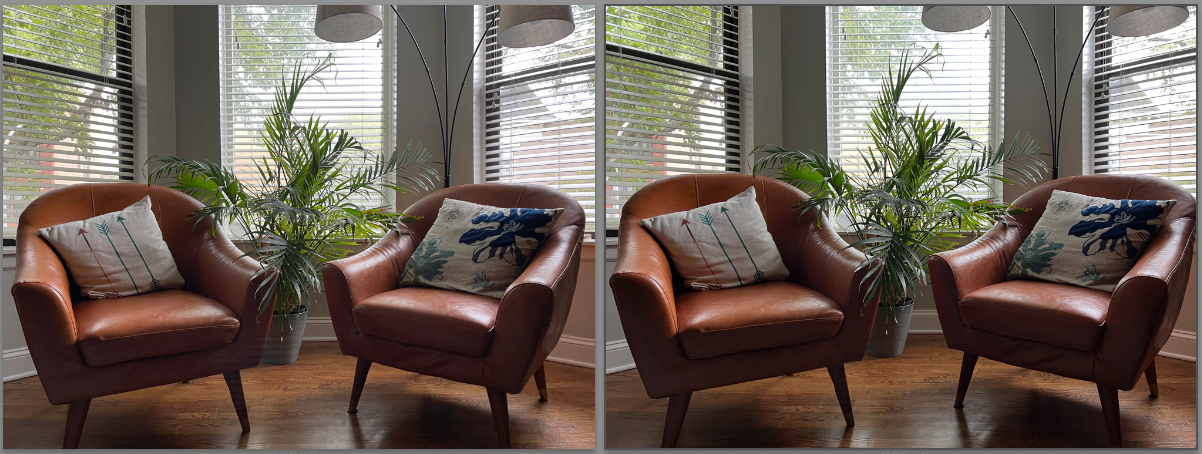
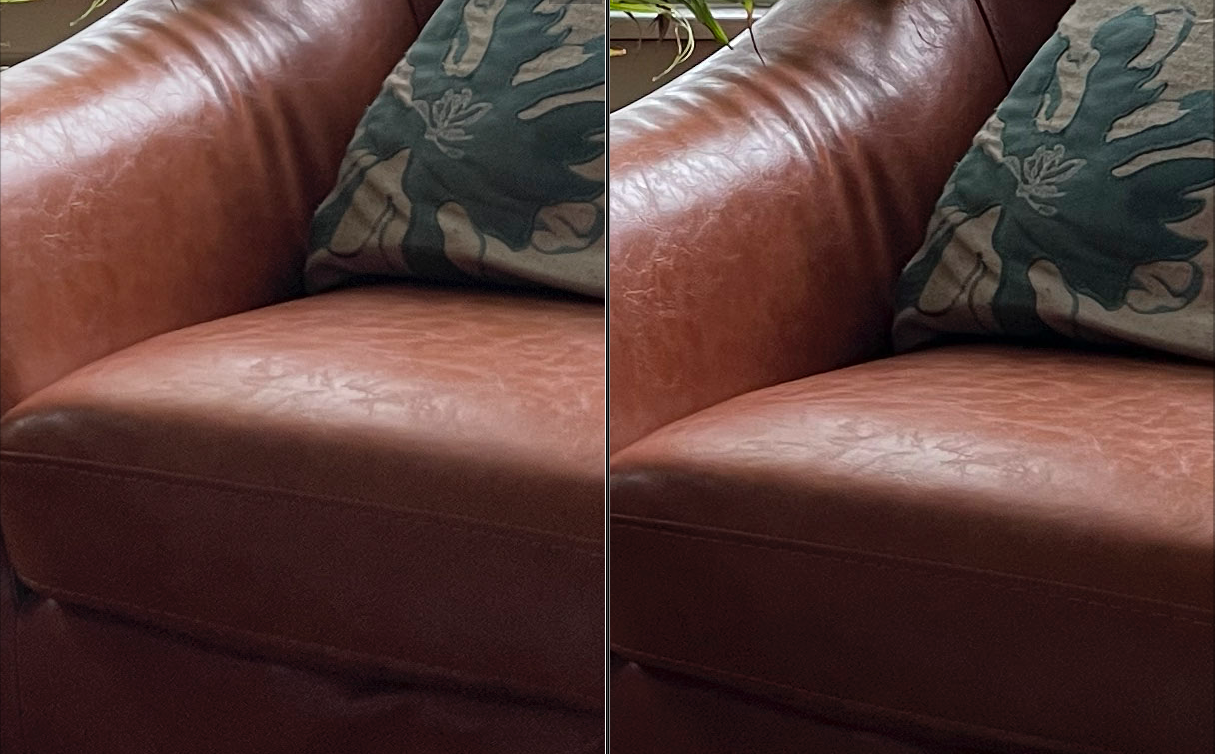
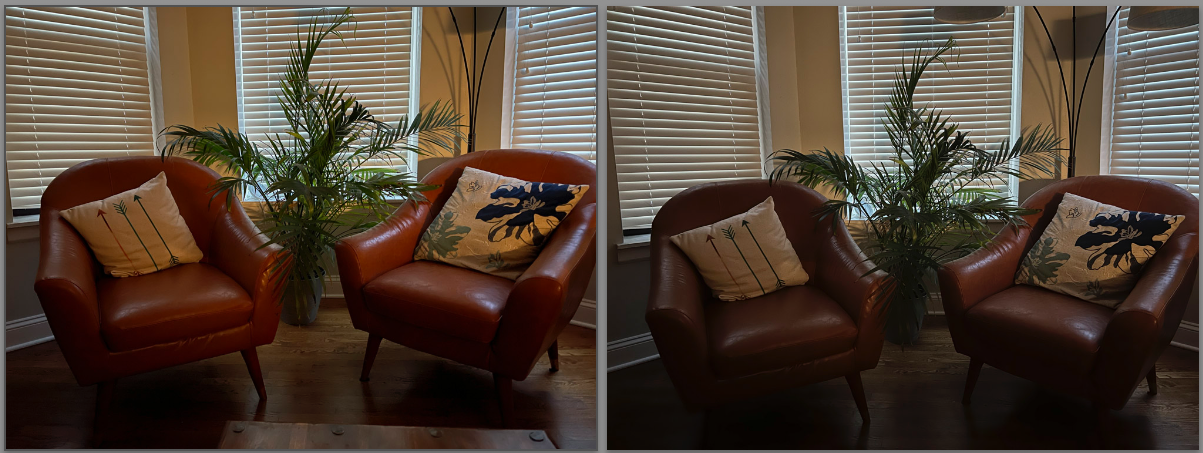
Night mode: iPhone 12 Pro Max (left), iPhone 13 Pro Max (right)
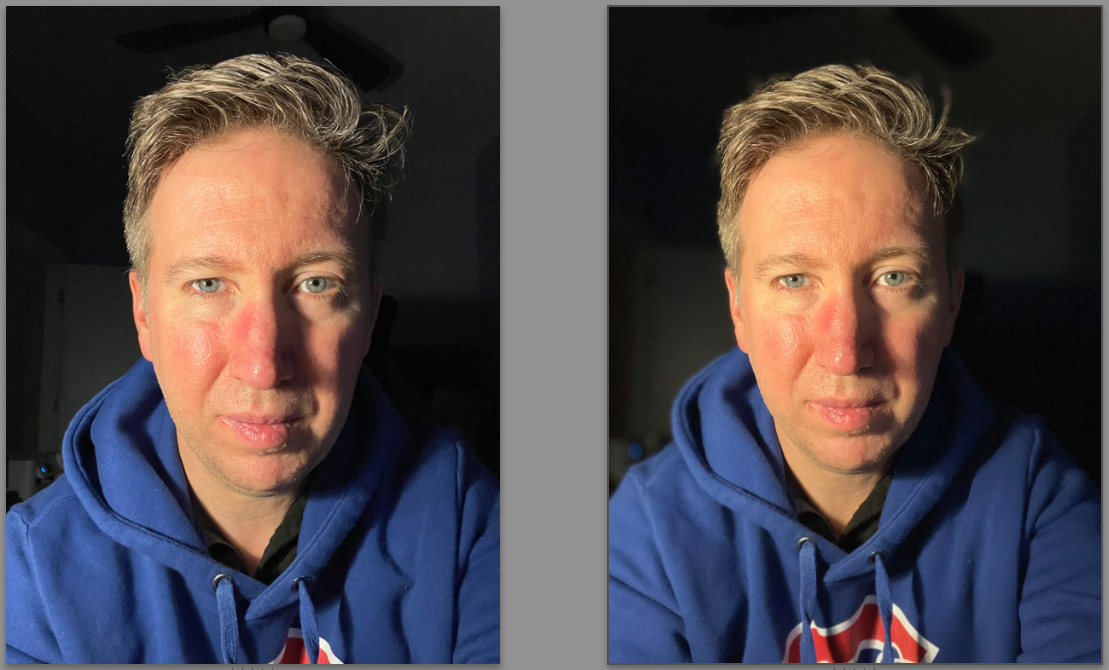


Ultra-wide-angle camera: iPhone 12 Pro Max (left), iPhone 13 Pro Max (right)

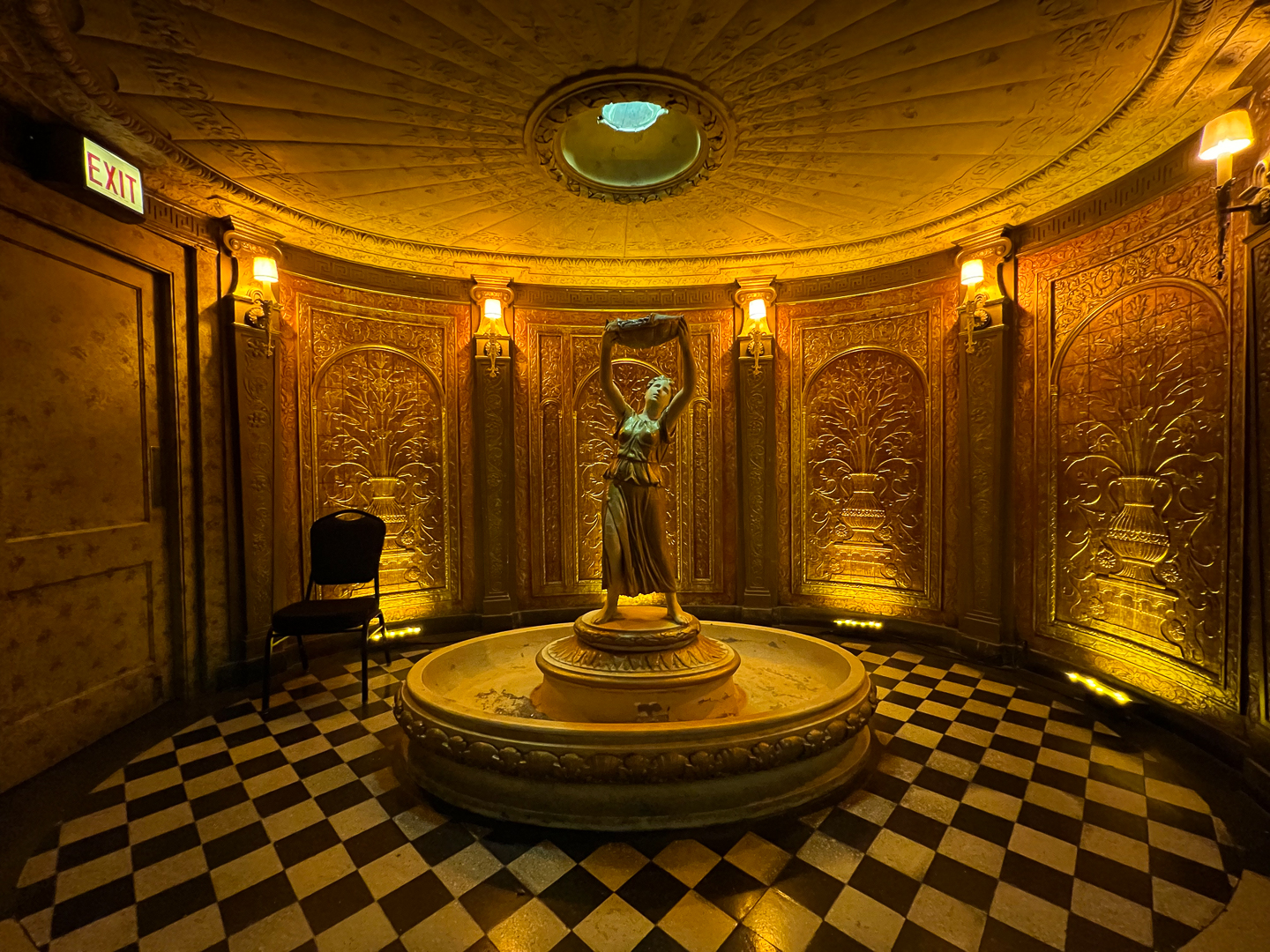
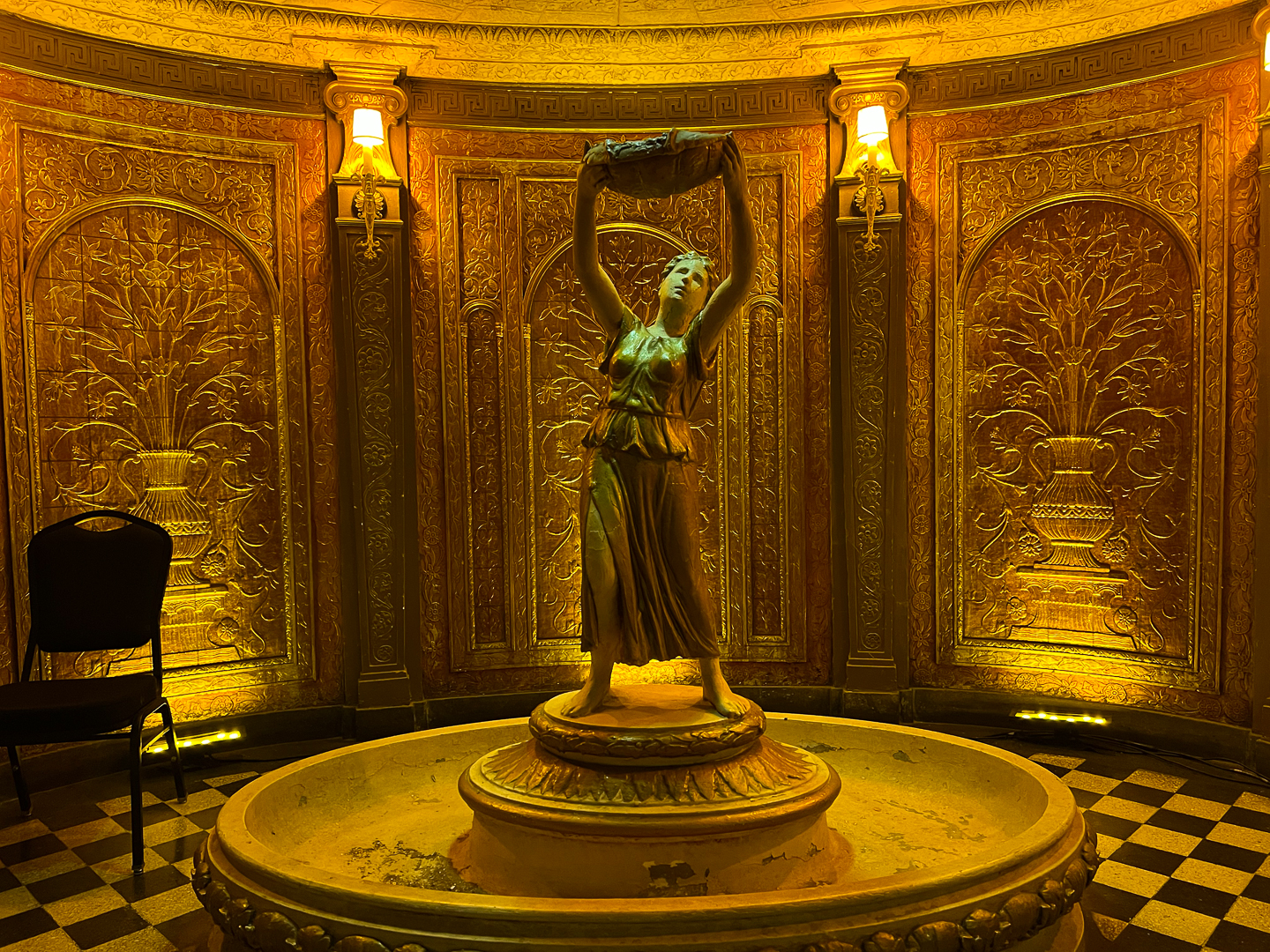


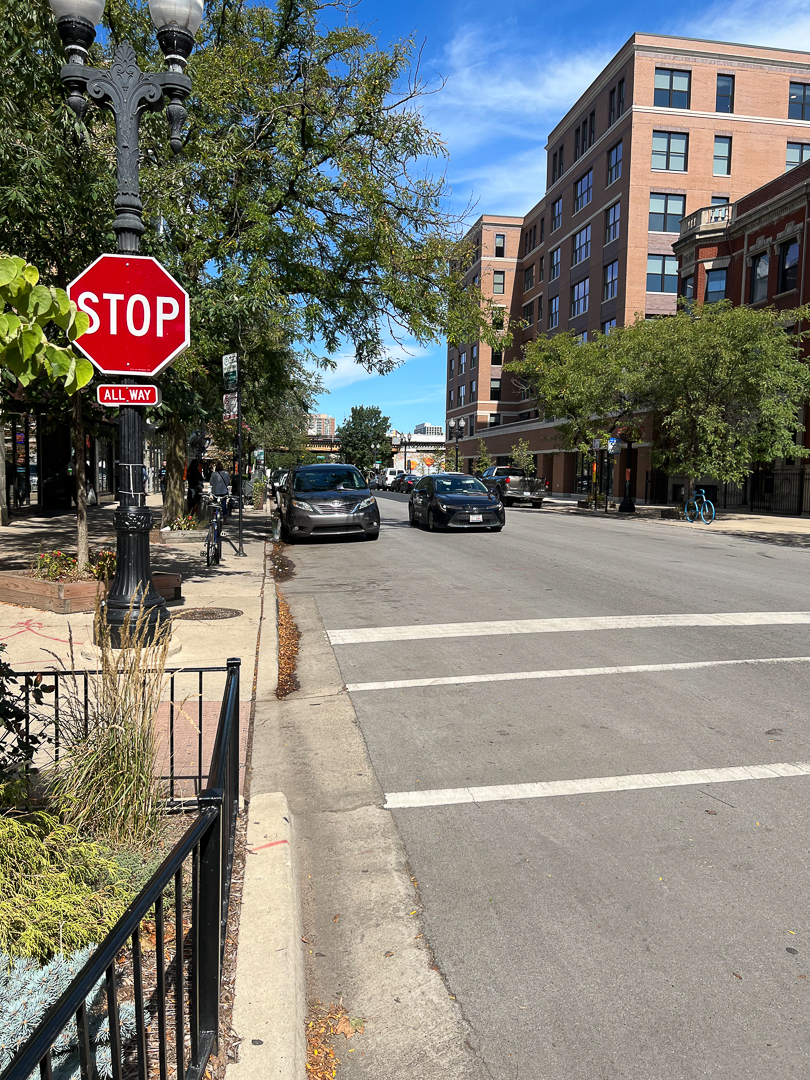
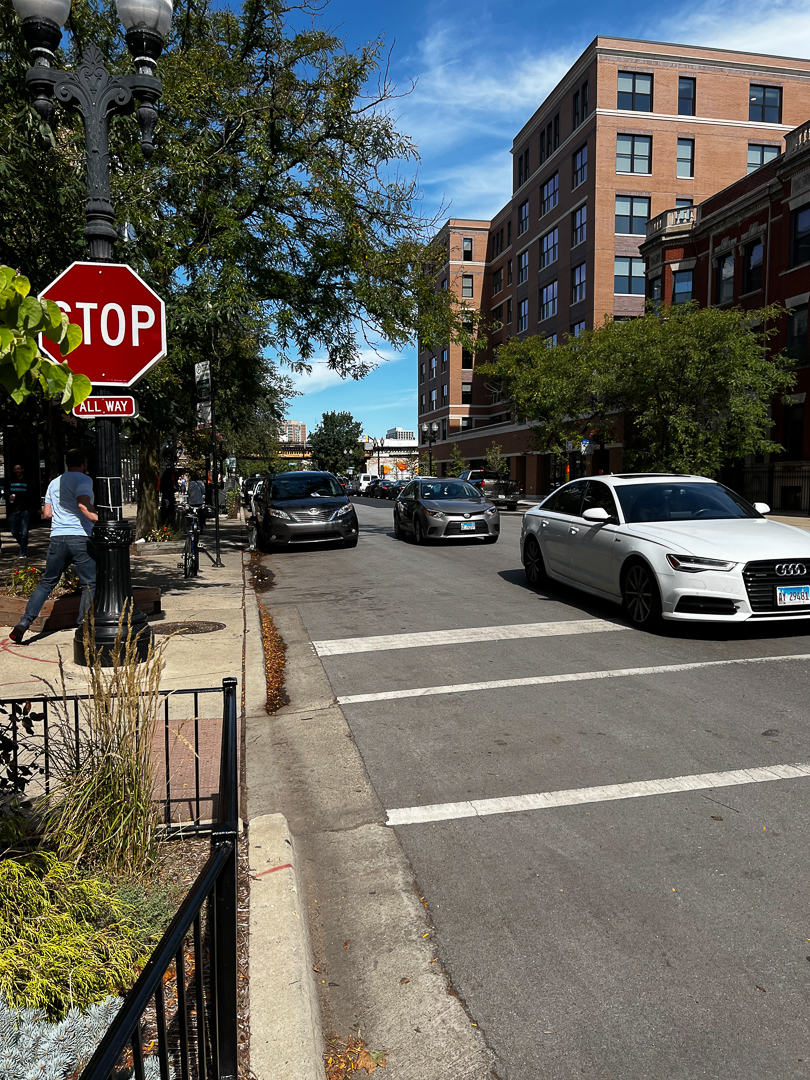

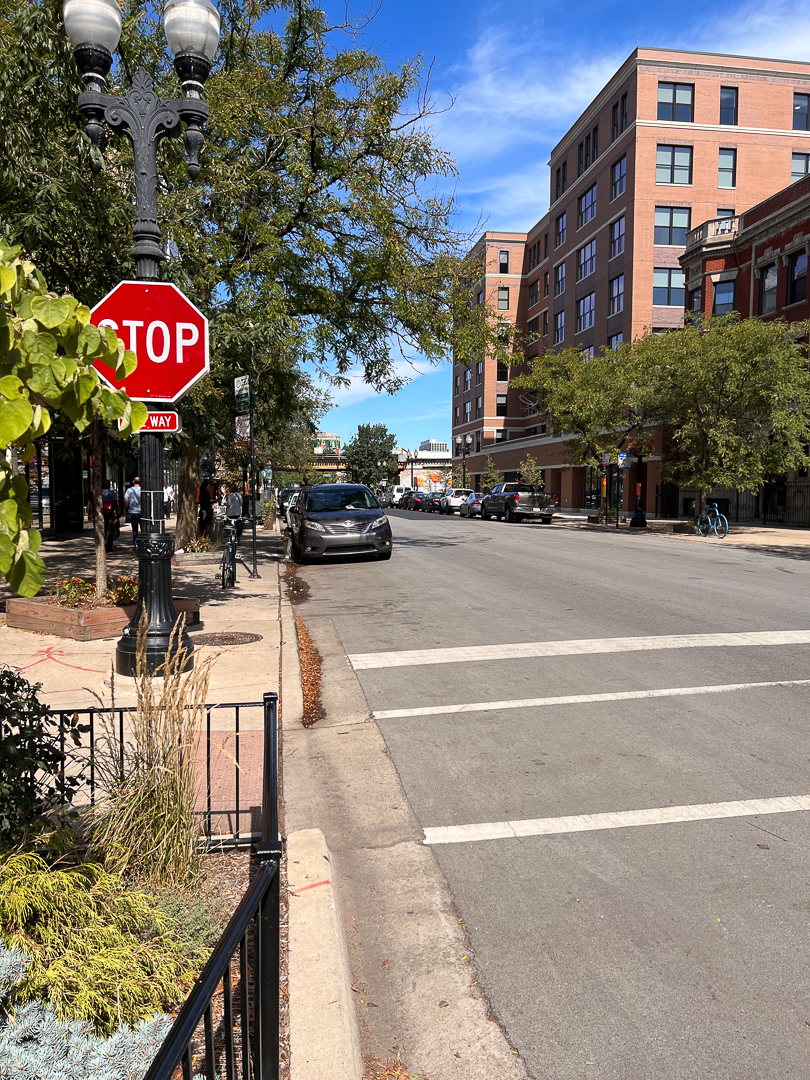


Even in nighttime mode, the Portrait setting allows you to take really natural shots – this one using the wide lens.
When it comes to video, there are two huge new additions, but for the most part, things are the same as the iPhone 12 Pro. You can record video at up to 4K 60fps in Dolby Vision HDR, or 1080p 240fps. All video naturally benefits from the cameras letting in more light, which is the main quality improvement here.
However, there are two brand-new things these phones can do. Well, three, but one isn’t available at launch.
First is the fact that you can also record video in Macro mode, which is a very cool option to have.
The really big one is Cinematic Mode, though. The simple way to explain this is that it’s like Portrait Mode for video, in that you can choose something to be in focus, and a fake depth-of-field blur is applied to the rest, giving you that rich cinematic look.
But that’s only the surface of what it does, because it also uses AI smarts to track what’s happening while you record, and will smoothly shift the focus automatically when it thinks it needs to, kind of like a focus puller would on a film. So if someone turns away from the camera to look at someone else, it will shift the focus from the first person to the second, for example.
But you don’t have to rely on its smarts. After the video is recorded, you can still choose what should be in focus, and you can manually shift the focus throughout the scene, long after you stopped shooting. You can also choose how deep the focus should be, so you can go super blurry, or a little more measured.
The only downside to Cinematic Mode is that, while it still records in Dolby Vision HDR, the resolution is limited to 1080p rather than 4K.
While I can't see many pro videographers making use of the Cinematic mode, it definitely has appeal for more casual filmmakers and even film students working on a low budget. The effects are really impressive, especially if you take the time to adjust the focus changes in the edit afterward. The ability to make these changes is also coming to iMovie, which will be really handy too.
The final of the three new features is ProRes support. ProRes is an existing format for high-quality video editing, used in some pro cameras and editing suites. Apple is planning to bring it to iPhone 13 Pro, though we don’t exactly know what that will mean, other than that it’ll be a higher-quality option. ProRes is really a family of formats, so what we get – if not a new format that’s semi-related – remains to be seen. In any case, it’ll probably be what justifies buying a 1TB iPhone: ProRes video is large.
iPhone 13 review: performance and battery
The iPhone 13 Pro Max uses Apple’s new A15 Bionic processor, which is the most powerful chip in any phone to date. And while the iPhone 13 and iPad mini (6th Gen) also use the A15, it is specifically the version in the Pro and Pro max that’s the most powerful of all.
Here, you get more RAM (useful for features such as ProRaw or ProRes recording), and a 5-core GPU.
The more powerful GPU is great for keeping things totally smooth on the ProMotion screen, and for making sure that any games that want to function at really high framerates to take advantage of it can do so.
General operation here is seamless and fast, even when using iMovie and Garage Band, which are memory intensive. Using Geekbench, the iPhone 13 Pro Max delivered a multi-core score that was 12% higher than that of the iPhone 12 Pro Max.
Apple has improved the 5G on its latest phones, though mostly to enable better worldwide support. You’ve still got support for up to mmWave speeds in the US, and standard 5G elsewhere.
Using T-Mobile's Ultra Capacity 5G – which is it's name for the mmWave 5G band – I was able to get download speeds of almost 500Mbps and upload speeds of over 40Mbps. This makes anything from video calls to movie streaming a breeze and feels like you're on Wi-Fi.
Of course, battery is one area where the Pro Max stands out above the other models. A bigger body means more space for battery capacity, and based on Apple’s quoted figures, you should get 20-25% more life from the Pro Max than the regular iPhone 13 Pro, and potentially around 50% more than the iPhone 13.
While I never had any issue with the battery life on the iPhone 12 Pro Max, the 13 Pro Max does seem to be offering even more usage time. I took the phone out for some fairly heavy photography testing and then continued using it the following day. It was only after 48 hours that the phone suggested switching to low power mode, as the battery had gone under 20%.
Basically, if longevity is your major priority, then the Pro Max is definitively the iPhone 13 model you should go for, as long as you’re happy with its bulky size.
iPhone 13 review: verdict
The iPhone 13 Pro Max is an extremely impressive phone. It delivers in every area, from the excellent camera array to the 120Hz screen and the long-life battery. If having the very best in all these areas is important, then this is the phone for you – if you're comfortable with its large size anyway.
The fact is that at launch the iPhone 13 Pro Max was the best avalable in Apple's stable. In many ways it still is, hence being well worthy of that five-star score. The only 'threat' is from the even more impressive (and expensive) iPhone 14 Pro Max.
Also consider
If you're happy with a slightly smaller screen and a couple of hours less battery life, you should definitely consider the iPhone 13 Pro, which on balance may be best suited to most Apple users.
If you are looking for a large-screen phone for photography, there are also a few Android phones worth considering too. The Samsung S22 Ultra boasts a slightly larger 6.8-inch 120Hz screen and adds a second longer telephoto camera to the mix.
But if you're here for best-of-best Apple, which is most likely, then you'll be wanting to consider the newer iPhone 14 Pro Max which looks set to take a notch out of its competitors (pun intended).

Matt is T3's former AV and Smart Home Editor (UK), master of all things audiovisual, overseeing our TV, speakers and headphones coverage. He also covered smart home products and large appliances, as well as our toys and games articles. He's can explain both what Dolby Vision IQ is and why the Lego you're building doesn't fit together the way the instructions say, so is truly invaluable. Matt has worked for tech publications for over 10 years, in print and online, including running T3's print magazine and launching its most recent redesign. He's also contributed to a huge number of tech and gaming titles over the years. Say hello if you see him roaming the halls at CES, IFA or Toy Fair. Matt now works for our sister title TechRadar.

